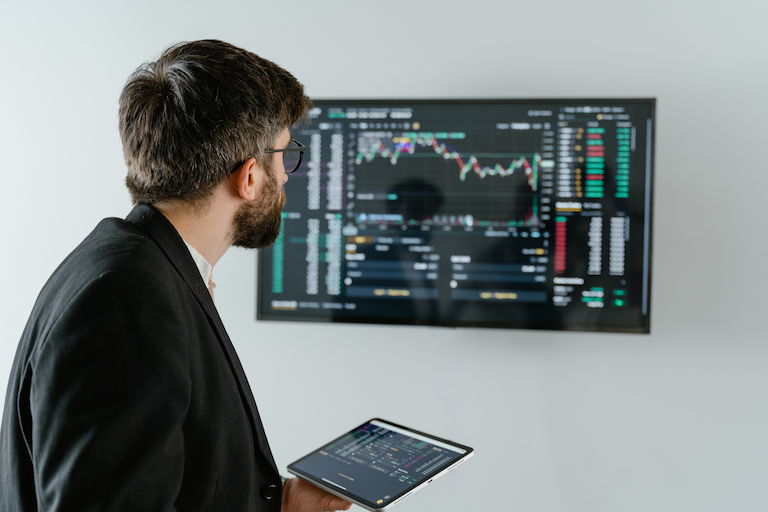
Real-Time Data : 5 Examples of How it Improves Efficiency

Venkat Obillaneni
Venkat Obillaneni is Aezion Cloud Data Engineer and Data Practice Lead.
Delayed decisions cost money, which is why businesses strive to act fast. The trouble is, when research is rushed, decisions about contracts, development, and even sales and support rarely work out as well as they could. That’s why real-time data analysis is so powerful. With real-time data analysis, businesses can unlock insights from information they already have, and they can do it in a way that’s accurate, fast, and accessible.
While business intelligence (BI) is nothing new, practical real-time data analysis for Main Street businesses is relatively new thanks to advances in technology, such as highly scalable cloud storage, big data management and machine learning all of which make it possible to turn “streaming data” into real-time analytics that can drive business decisions.
The result is a company that’s able to act quickly, strategically, and confidently at every turn. If your business isn’t yet using real-time analytics to drive growth, here are five examples that demonstrate why you should.
#1 Quick Adjustments for Marketing Campaigns
Since modern digital marketing and advertising platforms enabled adjustments based on data, numerous innovations have made it possible for businesses get more out of their marketing dollars. These innovations now include real-time data analysis which is helping companies take a step up from A/B split testing to actually make adjustments instantly based on changes occurring in real-time.
While an A/B split test splits traffic into two variations so businesses can review results and decide which one is better going forward, real-time data analysis provides faster results. As soon as traffic begins flowing onto a webpage, real-time analysis can show the team where the attention is being focused, what buttons are being clicked, what messaging is performing the best, and more.
Instead of waiting days or weeks for the split test results, which may only test one variable at a time, real-time data analytics allows for instant improvements as data flows in, allowing businesses to create a high-converting campaign in less time.
#2 Informed Trading for Professional Investors
Professional investors have historically relied on stacks of resources to help inform their next move, but real-time data analysis is taking a lot of the legwork out of the process and putting aggregated insights right on their desktop.
The result is reduced costs, time savings, and more accurate information thanks to AI and ML tools that can quickly process massive amounts of data from multiple sources in real-time. Sources could include news feeds, social media, financial databases, and even weather events.
#3 Improved Patient Care through Monitoring
The combination of wearable devices and real-time data analysis is just the beginning of how data is informing modern patient care. Wearable devices can be used to track the health status of patients at home, especially during exercise.
Additional devices are being used for rapid diagnosis in the ER, like equipment to help diagnose certain types of strokes and STEMI, which are often misdiagnosed yet require fast treatment to ensure survival and minimize severe side effects, like brain damage.
#4 Better Scoring for Loan Applications
Using real-time data analysis, financial institutions can look beyond credit scores to better analyze how well-suited an applicant is for a given loan. This example also shows great promise as companies continue to use automation to fight the presence of human biases and discrimination.
With real-time data analytics, financial institutions can avoid high-risk applicants, or address risks more effectively, which will, in turn, reduce losses. This can help achieve lower rates for well-qualified applicants.
#5 Fraud Prevention for Online Retailers
Credit card companies have invested massive amounts of resources into creating a network that minimizes fraud, but it’s far from perfect. Using real-time data analysis, retailers can better detect fraud before a purchase is finalized, saving time and reducing costs for lost merchandise and chargebacks.
The same techniques can be used to apply real-time data analysis for fraud prevention at the point-of-sale in retail stores and at common places where fraud occurs, like at gas stations.
Get Started with Real-Time Data Analysis
Are you interested in learning how real-time data analysis can help your business save resources, improve efficiency, and grow sustainably? Aezion’s team of data analysts can guide your strategy and help you implement the right tools to make the most of the insights and information that are hiding in your tech stack.
Contact us to schedule a discussion today to explore options to leverage real-time data in your strategic decision-making.

Venkat Obillaneni
Venkat Obillaneni is Aezion Cloud Data Engineer and Data Practice Lead.
Search
Subscribe To Our Blog
Enter your information to subscribe to the Aezion blog digest.
Recent Posts
- What are the 4 Types of Business Analytics? March 13, 2024
- The Benefits of Web-Based Systems for Business March 12, 2024
- 5 Types of Cloud Computing: What are They and How do They Work? November 20, 2023
- The Five Stages of Business Intelligence (BI) November 06, 2023
- What is QA Testing: Best Practices for Quality Assurance March 09, 2023
Archives
Categories
- Articles
- Artificial Intelligence
- Blockchain
- Business Intelligence
- Custom Software
- DApp
- Data Analytics
- Data Management
- Dedicated Development Teams
- Digital Marketing
- Docker Containers
- Ethereum
- Machine Learning
- Mobile Applications
- Natural Language Processing
- News
- Process Automation
- Python
- Smart Contracts
- Software Quality
- Stratis




